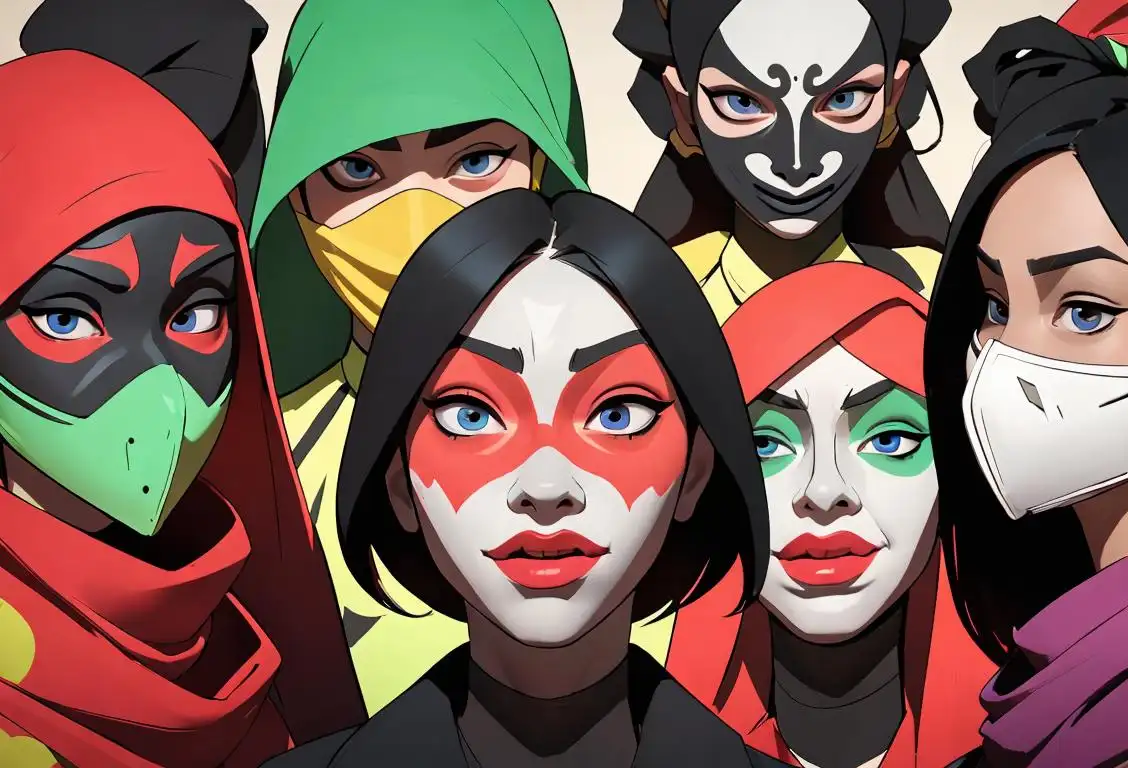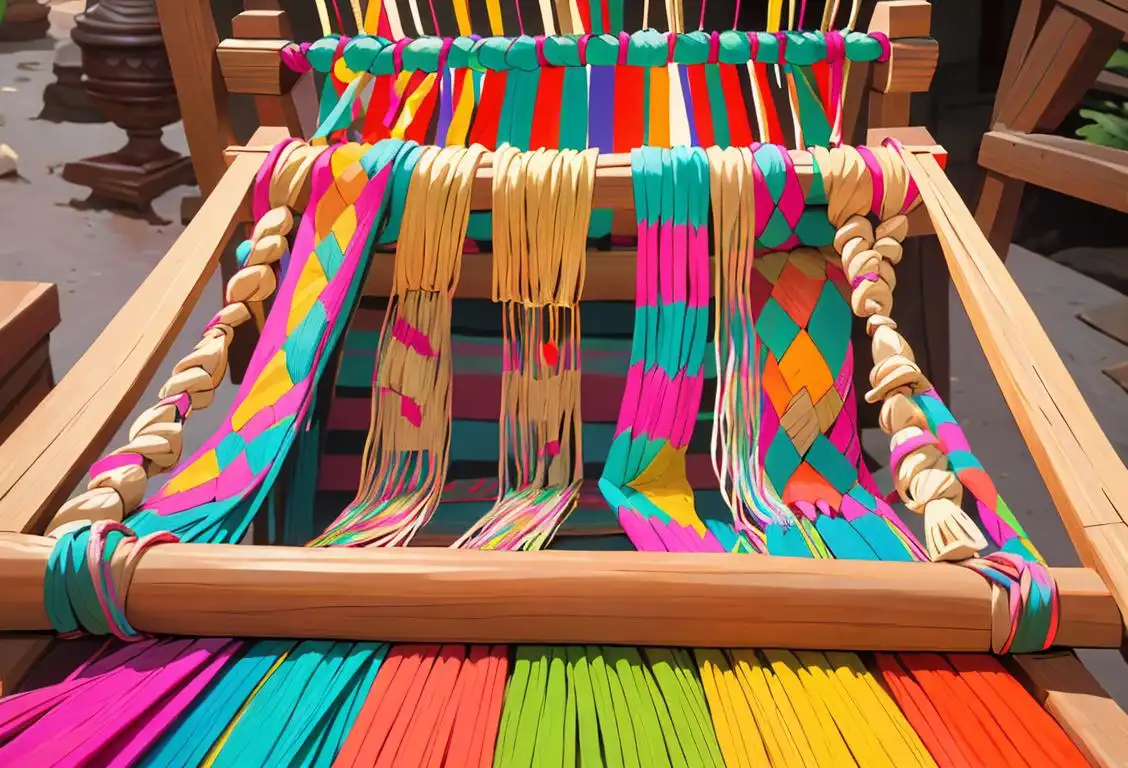National Shalwar Kameez Day

Hey there! Get ready to discover the fascinating world of National Shalwar Kameez Day. Whether you're a fashion enthusiast or just curious about cultural celebrations, this is the article for you. So, grab your favorite tea and let's dive in!
When is Shalwar Kameez Day?
It's national shalwar kameez day on the 18th September.
The Origin of National Shalwar Kameez Day
Every year on September 18, National Shalwar Kameez Day celebrates the traditional Pakistani dress that includes loose-fitting trousers (shalwar) and a long shirt (kameez). This national day pays tribute to the rich heritage and cultural significance of this iconic attire.
The origins of National Shalwar Kameez Day can be traced back to 2015 when it gained significant popularity online. Internet users started sharing their love for shalwar kameez, posting pictures, and organizing events to showcase its elegance and diversity. Since then, this day has become an annual celebration of Pakistani culture and fashion.
Why Shalwar Kameez?
Shalwar kameez is not just a piece of clothing; it's an embodiment of comfort, style, and tradition. Worn by millions of people in Pakistan and across the globe, it reflects the beauty of Pakistani culture and showcases the country's textile heritage.
The design and fabric of shalwar kameez vary across different regions of Pakistan, each with its own unique charm. From vibrant colors to intricate embroidery, every shalwar kameez tells a story and captivates the senses.
How to Celebrate
Celebrating National Shalwar Kameez Day is all about embracing diversity, promoting cultural understanding, and having fun. Here are a few ideas to make this day extra special:
- Wear your favorite shalwar kameez outfit and show off your style on social media using the hashtag #ShalwarKameezDay.
- Organize a virtual fashion show where people can showcase their diverse shalwar kameez collection.
- Explore the history and different styles of shalwar kameez through online resources or by visiting exhibitions and events.
- Support local artisans and designers by purchasing handcrafted shalwar kameez outfits.
Did You Know?
Did you know that shalwar kameez has been around for centuries? It originated during the Mughal era in South Asia and has since evolved into various regional styles, combining elements of Persian and Central Asian fashion. Talk about a timeless trend!
History behind the term 'Shalwar Kameez'
16th century
Emergence of the Term
The term 'shalwar kameez' originated in the 16th century in the Indian subcontinent. Shalwar refers to loose-fitting trousers that are wide at the waist and narrow at the ankles, while kameez refers to a long tunic or shirt. This traditional attire was worn by both men and women, and it quickly became popular among the Mughal nobility, reflecting the rich cultural heritage of the region.
15th century
The rise of the Shalwar Kameez
During the 15th century, the Shalwar Kameez emerged as a traditional outfit in the Indian subcontinent. The term 'shalwar' refers to the loose pants, while 'kameez' refers to the tunic-like garment. The origin of the term 'shalwar kameez' can be traced back to this time when it became popular attire among the Mughal rulers and their nobles.
1500s
Origin of the term 'shalwar kameez'
During the Mughal Empire, which spanned from the 16th to the 19th century, a new style of attire emerged in the Indian subcontinent. This ensemble consisting of loose pants called 'shalwar' and a long shirt called 'kameez' became highly popular among men and women. The term 'shalwar kameez' originated from the Persian words 'shalwar' meaning pants and 'kameez' meaning shirt, reflecting the influence of Persian language and culture in the region.
500 BCE
The Origins
During the Indian subcontinent's ancient period, around 500 BCE, the precursor to the shalwar kameez, known as the shatika, emerged. This garment consisted of a lower garment called shatika, which was tied at the waist, and an upper garment that covered the upper body. It was worn by both men and women and was commonly seen in various regions.
13th century
Invention of Shalwar Kameez
Shalwar Kameez, a traditional clothing ensemble, was believed to have been invented in the 13th century. Its origins can be traced back to the region of present-day Pakistan and India, which was known as the Indian subcontinent at the time. It quickly became popular among both men and women due to its comfort, functionality, and elegant design.
19th century
British Influence
During the 19th century, British colonization of the Indian subcontinent had a significant impact on clothing styles. The British introduced Western-style garments, such as trousers and shirts, which gradually influenced the traditional shalwar kameez. This fusion of styles led to the modernization and evolution of the shalwar kameez, making it more versatile and adaptable to changing preferences.
18th century
Influence of Persian Culture
In the 18th century, the region came under the influence of Persian culture, particularly during the reign of the Mughal Emperor Akbar. Persian arts, literature, and clothing styles became popular, leading to the fusion of Indian and Persian elements in the Shalwar Kameez. The term 'shalwar kameez' gained further prominence as it became a symbol of cultural syncretism in the region.
17th century
Introduction of Angrakha
During the 17th century, a variation of the Shalwar Kameez called Angrakha began to gain popularity in the Mughal empire. Angrakha featured a unique overlapping design at the front, secured with cords or buttons. It became a fashion statement among the Mughal nobility and eventually spread to different parts of the subcontinent.
19th century
Evolution of shalwar kameez
Throughout the 19th century, the shalwar kameez underwent various transformations in terms of fabric, design, and embellishments. The garments became more tailored, and intricate embroidery, mirror work, and embellishments started adorning the outfits. This period witnessed the fusion of Indian and Persian styles, resulting in stunning and diverse variations of shalwar kameez across different regions.
500 CE
Mughal Influence
With the arrival of the Mughals in the Indian subcontinent around the 16th century, a new era for the shalwar kameez began. The Mughals, known for their opulent and extravagant lifestyle, introduced intricate designs, rich fabrics, and innovative tailoring techniques to the shalwar kameez. This brought a touch of luxury to the traditional attire, making it popular among the elite and the general population alike.
Partition of India 1947
Regional variations and influence
After the partition of India in 1947, shalwar kameez became an important symbol of regional identity. It evolved differently in various parts of the Indian subcontinent, reflecting the unique cultural and traditional aspects of different communities. The Punjabi style shalwar kameez, with its wide pants and short kurta, gained popularity in Pakistan, while the more fitted and intricately embroidered versions became prominent in India.
19th century
Influence of British Colonial Rule
The 19th century brought significant changes to the fabric and style of Shalwar Kameez. British colonial rule in the Indian subcontinent led to the introduction of Western fashion influences. The traditional loose-fitting Shalwar was replaced by a tailored trouser style called 'Pajama' while the loose-fitting shirt evolved into a straight-cut 'Kameez'. This fusion of traditional and colonial styles created a new version of Shalwar Kameez that was suited to both traditional and modern tastes.
19th century
Colonial Era and Modernization
During the 19th century, the Indian subcontinent came under British colonial rule, which brought significant changes to the region's fashion. Western influence led to the adoption of new styles and fabrics, but the Shalwar Kameez remained an integral part of the culture. It adapted to the changing times with modifications in cuts, designs, and embellishments, while still retaining its essence. The term 'shalwar kameez' continued to be used to describe this traditional attire.
18th Century
Regional Variation
By the 18th century, different regions of the Indian subcontinent started developing their unique variations of the shalwar kameez. Each region incorporated its own traditional handcrafted techniques, embroidery styles, and fabric choices, adding diversity and richness to the garment. Popular variations include the Punjabi suit, Sindhi salwar kameez, and the Anarkali suit.
1947
Independence and National Identity
After India and Pakistan gained independence in 1947, the shalwar kameez became an integral part of their national identities. It symbolized the rich cultural heritage and traditional values of the region. In Pakistan, the shalwar kameez became the official national dress, highlighting its significance and widespread acceptance among the population.
Modern Times
Global Popularity and Fashion Statements
In recent years, the shalwar kameez has gained international recognition and popularity. It is not only worn as traditional attire but has also become a fashion statement, with designers incorporating modern trends and styles into its design. The versatility and comfort of the shalwar kameez have made it a favorite among people of various cultural backgrounds, bridging the gap between traditional and contemporary fashion.
Late 20th century
Global popularity
In the late 20th century, shalwar kameez gained global recognition and became a popular choice beyond South Asia. The vibrant colors, comfort, and versatility of this attire attracted people from different cultures. Designers started incorporating contemporary twists, such as modern cuts, fusion of fabrics, and experimental styles, making shalwar kameez a fashion statement worldwide.
20th century
Emergence of Regional Styles
In the 20th century, Shalwar Kameez took on various regional styles across the Indian subcontinent. Different provinces and regions embraced their distinct designs and embellishments, giving rise to diverse regional variations. Each style incorporated unique embroidery patterns, fabric choices, and silhouettes, reflecting the cultural diversity and local artistic traditions found throughout the subcontinent.
20th century
Popularization and Global Appeal
In the 20th century, the Shalwar Kameez gained immense popularity not only in South Asia but also among the diaspora communities around the world. It became a symbol of cultural identity and pride, transcending its traditional roots. The term 'shalwar kameez' became recognized globally as a distinct term in the world of fashion, representing the unique style and heritage of South Asia.
20th Century
Modernization and Global Recognition
During the 20th century, the shalwar kameez underwent further modernization, adapting to changing fashion trends and global influences. The garment became more accessible, with ready-made options available in a wide range of styles and fabrics. Additionally, renowned fashion designers began incorporating the shalwar kameez into their collections, gaining recognition on international runways. This contributed to its global popularity and acceptance as a fashionable and culturally significant attire.
Present Day
Global Popularity and Contemporary Fashion
Shalwar Kameez has transcended its regional origins and gained global popularity in the present day. It is now recognized as a stylish and versatile outfit that can be worn for both casual and formal occasions. Contemporary designers have further modernized the traditional attire by incorporating innovative cuts, fabrics, and fusion elements. This has contributed to the adaptability and continued relevance of Shalwar Kameez in the ever-evolving world of fashion.
Present Day
Continued Relevance and Evolving Styles
Today, the shalwar kameez remains an integral part of traditional clothing in the Indian subcontinent, worn by people of diverse backgrounds and ethnicities. Its versatility has made it a preferred choice for both formal occasions and everyday wear. The styles and designs have continued to evolve, incorporating contemporary elements while staying true to its cultural roots. The shalwar kameez is a symbol of cultural pride and identity, representing the rich heritage of the region.
Present Day
Continued Significance
The term 'shalwar kameez' remains widely used today, encompassing a vast range of styles, patterns, and variations. It has become a versatile outfit, worn for both formal and casual occasions, and has even influenced contemporary fashion trends globally. The Shalwar Kameez continues to evolve while staying rooted in its rich history, serving as a testament to the enduring cultural impact of this traditional attire.
Did you know?
Did you know that shalwar kameez has been around for centuries? It originated during the Mughal era in South Asia and has since evolved into various regional styles, combining elements of Persian and Central Asian fashion. Talk about a timeless trend!Tagged
fun culture fashionFirst identified
18th September 2015Most mentioned on
18th September 2015Total mentions
14Other days
Batik Day
Headwrap Day
Shalwar Kameez Day
Dress On Vyshyvanka Day
Trend With This Durag Day
Mask Day
Head Wrap Day
Hat Day
Handloom Day
Dress Like Your Inner Hoe Day







